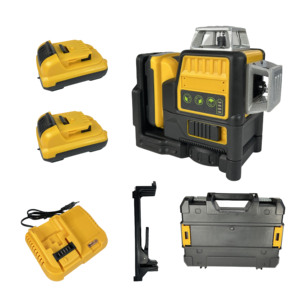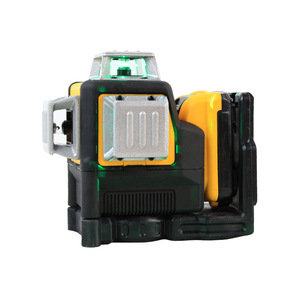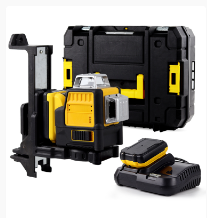(96074 products available)























































































































































































A laser level is a device used in construction and other sectors to precisely measure and align objects or surfaces. It projects a laser beam into a target surface, resulting in a straight and level reference line or plane. A laser level typically includes a laser diode, a leveling device, and a projection unit. The leveling mechanism guarantees that the laser beam is level and stable. The projection unit directs the laser beam into a line, dot, or other pattern.
Firstly, laser levels offer highly precise alignments and measurements, guaranteeing accuracy in jobs like building. A better standard of work is produced because it eliminates human error and gives consistent results. Second, leveling and alignment are completed much more quickly with laser levels. Compared to more conventional techniques, such as using string lines or a spirit level, they provide a rapid and simple setup, saving time and effort. Third, laser levels can send a laser beam over extended distances, allowing for more extensive leveling or alignment without the need for frequent repositioning. Time is saved, and productivity is raised overall. Moreover, even for individuals with little experience, using laser levels is usually simple. They frequently have user-friendly interfaces and straightforward controls, making them accessible to both pros and DIY enthusiasts.
First, the line laser level creates a straight, horizontal, or vertical laser line on a surface. It is widely used to align walls, build shelves, and lay tiles. Some line laser levels can project multiple lines or produce cross-line patterns. Second, the rotating laser level produces a revolving laser beam in either a horizontal or vertical plane. It is commonly employed in large-scale building tasks like leveling foundations, grading land, and erecting ceilings. Rotary laser levels provide 360-degree coverage and can be used with a receiver to enhance their range. Third, the self-leveling laser level automatically aligns the laser beam to be absolutely horizontal or vertical. They maintain precision on uneven surfaces or when the tool is slightly inclined using an internal pendulum or electronic leveling system. Self-leveling laser levels are easier and faster to set up. Furthermore, the tripod laser level is a form of laser level that is attached to a tripod for stability and ease of positioning. Its laser level and tripod stand allow precise leveling and alignment over a greater area.
First, laser levels are widely used in construction to level foundations, align walls, set grades, and establish reference points. They ensure measuring accuracy and precision, improving building quality. Second, laser levels aid interior design and refurbishment. They help to align and install cabinets, shelves, and fixtures; hang pictures and artwork; lay tiles and floors; and mark level lines for painting or wallpaper installation. Third, laser levels are essential for land surveying and topographic mapping. They construct accurate contour lines, measure elevations, and establish horizontal and vertical reference lines. For structure layout and alignment, construction surveyors use laser levels. Laser levels let electricians and plumbers position fixtures, conduits, and pipelines and install them precisely. They place and align electrical outlets, switches, and plumbing fixtures.